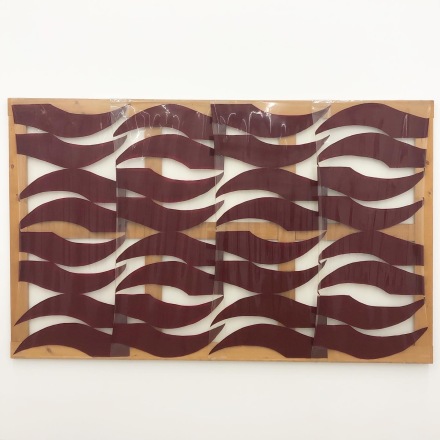
Carla Accardi, Grande Rosso Scuro (1974), via Art Observed
Embracing a unique conversation around texture and perception, 55 Walker, a space shared by Bortolami Gallery, Andrew Kreps and Kaufmann Repetto, presents an impressive dual artist show around the works of Carla Accardi and Elisa Sighicelli. Mixing media and approach to impressive effect, the show marks an engaging exploration of varied approaches and presentations of shared aesthetic concerns.
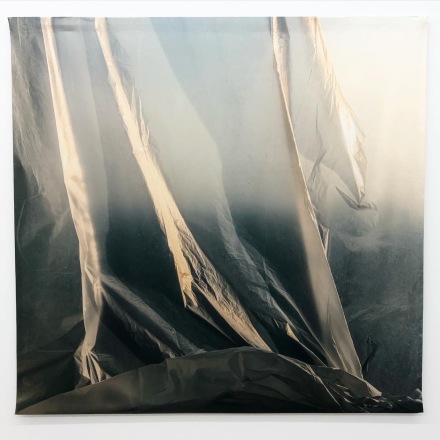
Elisa Sighicelli, Untitled (1151) (2020), via Art Observed
Accardi’s work in Sicofoil, a clear plastic material that offers her works a luminous quality, was first pioneered during the 1960’s, the result of a delivery to her studio that included the material. Taking it and incorporating it into new sculptures and installations, by 1966 Accardi began fastening the material directly to stretcher bars, and using it as a way to balance various textures and materialities in a shared space. As seen in the earliest work in the exhibition, Segni neri, 1967, Accardi painted her signature calligraphic marks on the Sicofoil and overlapped the material in lattice-like patterns. In doing so, she was able to achieve different depths and levels of opacity throughout the work, as well as a visible interaction between the painting’s recto and verso.
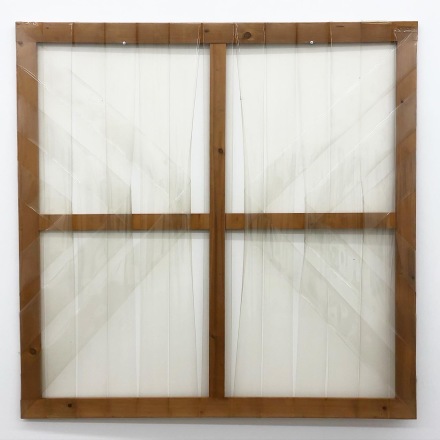
Carla Accardi, #639 (1974), via Art Observed
Tension and transparency are directly addressed, allowing the viewer to witness this balance against the thick coats of paint on the surface, creating smooth patterns that counter the overlaid strips of Sicofoil. In Grande Rosso Scuro, 1974, the largest painting on Sicofoil the artist made, the negative space between the bold marks interacts with the space behind the painting. Culminating with what was perhaps Accardi’s most radical use of the material are works where the Sicofoil is left unpainted, as in Grande Trasparente, 1975, a near obliteration of the picture plane, and a focus on the painting’s object-ness, Accardi plainly shows both the bare material and the stretcher bar, the painting’s support. Throughout, this sense of surface and its ability to transmute the language of the canvas into questions of tightness and layering offers a delicate yet nuanced exploration of just how one might understand the canvas as a medium itself.
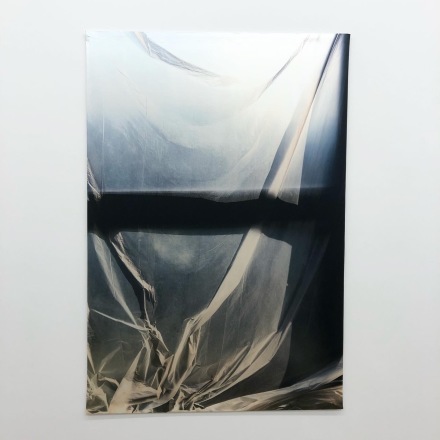
Elisa Sighicelli, Untitled (1138) (2020), via Art Observed
A similar focus on the painting’s structure informs Elisa Sighicelli’s new works, which are created by photographing draped, recycled plastic sheets in her studio in front of a window. Initially appearing as meditations on color and light, the resulting compositions are punctuated by the stark horizontal or vertical lines of the window frame. These lines become a stand-in for the stretcher bars themselves and reference the art historical understanding of painting as a window.
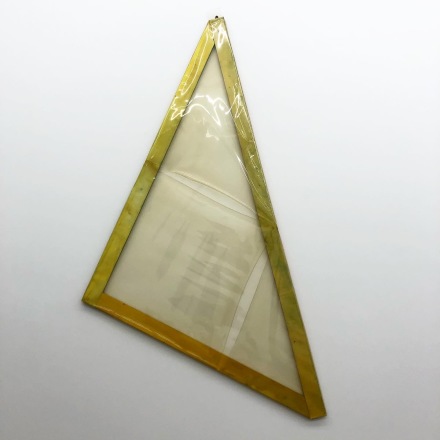
Carla Accardi, Dimenticare Mettersi in Salvo n.1 (1978), via Art Observed
While abstract, the works maintain an intrinsic relationship to the real environment in which Sighicelli made them. The use of lights enable new dimensional and tactile properties within the plastic, and obscured objects show fields of color in the composition. In turn, the works present a complex layering of space as the dichotomy between a perceived inside and outside is blurred and confused. Similar to Accardi’s work, the shifting perceptions of depth in each work are reinforced by their medium. Sighicelli’s photographs are printed directly onto a pliable satin that is suspended on the wall, allowing the material to become a stand-in for what it is intended to represent. Rather than a direct meditation on material, Sichicelli’s work seems to explore a distanced counterpoint, where the interaction of tensions and spaces is rendered into a flat plane for the viewer’s consideration.
The show closes January 23rd.
– C. Rhinehardt
Read more:
Exhibition Site [Andrew Kreps]



